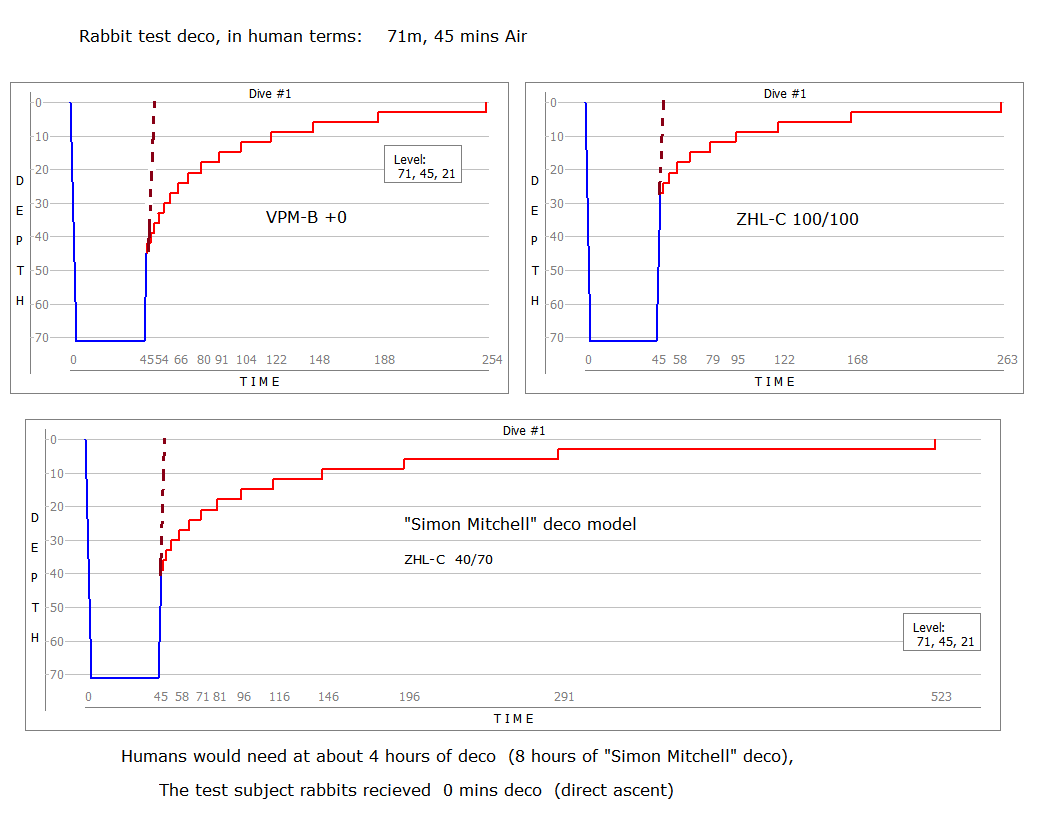Until you can up with a real positive meaning to VGE, like I asked above, all the guess work on the value of VGE amounts to zero. And that is what VGE are worth right now - zero.
But right now - VGE are a mystery with no known meaning or value.
This establishes correlation (a real positive meaning):
From
Tech Diving Conference Proceedings page 120.
These quotes from Dr. N. Pollock are interesting in the VGE discussion:
#294
"Intravascular bubbles are not the perfect measure, but they provide insights that certainly are not discounted in the scientific community. Similarly, they should not be discounted in the diving community."
#305
"Unfortunately, Ross, I do not believe that our core positions are in agreement. The differences are much greater than simply semantic."
#313
"It is not valid to talk about microbubbles in the bloodsteam as different from microbubbles in any other tissue."
#318
"Everyone would like to find the holy grail, but the important thing is the process. Cogitate, hypothesize, test, revise as needed, repeat. If the research community had any reason to believe the genesis of bubbles was wildly different between blood and non-blood tissue, we would probably have some evidence at this point. We do not."
#333
"... a fundamental element that is common to all bubble models of decompression ...Not one of them measures bubbles. Not one. There is theorizing and hand waving, but no measures. Despite this, the near-religious fervor is often felt."
#356
"Bubbles are a clear indicator of decompression stress. Getting off the bottom (that is, skipping the deep stops) can reduce tissue loading in intermediate and slow tissues. No matter what is done at depth, prolonging shallow stop time is effective at reducing VGE in individuals predisposed to develop them. Other strategies might work, but I am most impressed by those based on credible evidence. I call prolonged shallow stops really cheap insurance."
#375
"The impact of deep stops is not that they target some different physical reality. It is actually quite simple; the extra time spent deep allows more inert gas uptake in the relatively undersaturated intermediate and slow tissues. This is simply a loading problem that subsequently produces a higher degree of decompression stress. If there is less uptake at depth, ascent to a relatively shallow stop has much less risk. The idea that deep stops controlled bubble growth is one of the armchair arguments that has not lived up to human testing ... As with all the protocols we developed and subsequently saw fail, it is time to respect the data over the hand-waving."
#390
"The story is advancing nicely. Simon [Mitchell] has provided a number of solid references that describe some of the relevant current understanding ... Read, learn, decide for yourselves."





 . Who cares. This test added zero to the knowledge base. Its no more clever than blowing up your kid sisters dolls, when you were younger. Look Ma, I blew up the rabbits.
. Who cares. This test added zero to the knowledge base. Its no more clever than blowing up your kid sisters dolls, when you were younger. Look Ma, I blew up the rabbits.

